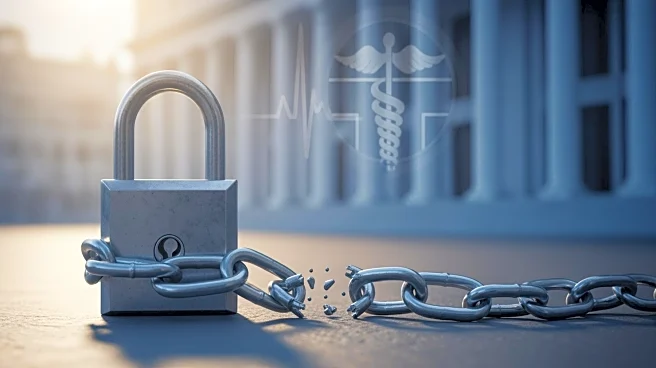What's Happening?
The Senate has advanced a bipartisan deal to end the longest government shutdown in U.S. history. The agreement includes three full-year spending bills for certain agencies and a short-term resolution
to maintain current spending levels through January 30 for the rest of the government. President Trump expressed support for the deal, indicating that it has enough Democratic backing to proceed. The shutdown, which has been a significant political issue, is expected to end soon, allowing the government to resume normal operations.
Why It's Important?
The resolution of the government shutdown is crucial for the functioning of federal agencies and services that have been disrupted. The shutdown has had widespread effects, including delays in government services and financial strain on federal employees. Ending the shutdown will restore normalcy and allow government operations to continue without interruption. Additionally, President Trump's pardoning of Giuliani and others involved in 2020 efforts is significant as it reflects ongoing political maneuvers and controversies surrounding the administration.
What's Next?
Following the Senate's advancement of the deal, the next step is for the House of Representatives to vote on the measure. If passed, the government will reopen, and agencies will resume their functions. The political implications of the pardons may continue to unfold, potentially affecting public perception and future political strategies. Stakeholders, including federal employees and political leaders, will be closely monitoring the situation as it develops.












